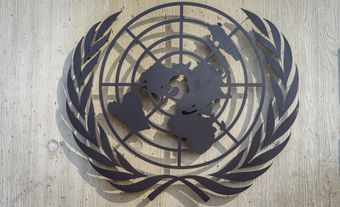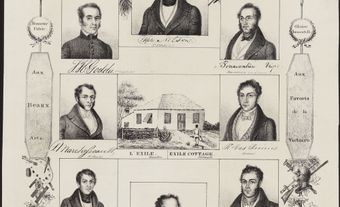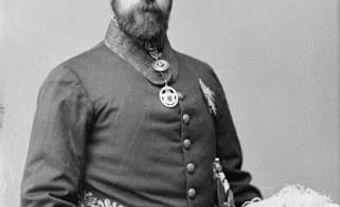This article was originally published in Maclean's Magazine on November 2, 1998
US Abortionist Slain
The soft-spoken Vancouver doctor, in her late 40s and a mother of three, does not want her name used. Nor does the 52-year-old doctor in Edmonton, a father of two. Another Vancouver gynecologist, a bespectacled grandfather, won't reveal his name or even his approximate age. All of them perform abortions, and all are extremely anxious, especially at this time of year, about their safety. The cause of their concern: five unsolved shootings over the past four years of doctors who provide abortions - all happening close to Remembrance Day, Nov. 11. The most recent attack, last week, was also the first fatality. On Friday night, an unknown assassin with a high-powered rifle shot and killed Dr. Barnett Slepian, 51, as he paused in an office area of his home in Amherst, N.Y., near Buffalo.
Only three days earlier, police had warned of possible sniper attacks against doctors who perform abortions in upstate New York and in Canada. The alert came from a joint task force formed last year involving the RCMP, the FBI and police in Vancouver, Winnipeg and Hamilton. According to the investigators, there are signs that three previous Canadian shootings and one last year involving a doctor in Perinton, N.Y., were linked. "There is a pattern to this November date," said Sgt. Ron Oliver of Winnipeg. "The situation naturally concerns us."
Until last week, the shootings had caused injuries but not death. On Nov. 8, 1994, while eating breakfast in his Vancouver home, Dr. Gary Romalis was hit in the left thigh by a bullet smashing through the window of his kitchen. A second shot narrowly missed him. A year later, on Nov. 10, 1995, a sniper hit Dr. Hugh Short's right elbow as he sat in the second-floor den of his home in Ancaster, Ont., near Hamilton. There were no shootings in 1996, but someone sprayed butyric acid, a hazardous chemical, into the ventilation system of the Morgentaler abortion clinic in Edmonton on Nov. 11. The clinic was closed for the day and no one was hurt. Then last year, a bullet pierced a back window of obstetrician-gynecologist Dr. Jack Fainman's Winnipeg home on Nov. 11, striking him in the right shoulder.
Despite the string of attacks, police said last week that it would be impossible to provide security for all doctors who provide abortions. That leaves doctors to find their own means of ensuring their safety. Many resent having to do so, or wonder if they are doing enough. "Am I overreacting if I go away?" muses Dr. M of Vancouver. "Or am I being irresponsible to my family if I stay?" She will take her children with her when she leaves town, but she is angry about it. "I resent having to disrupt my family's life to accommodate this craziness." Dr. H., the other Vancouver physician, always keeps the curtains drawn at home and alters his route to work at this time of the year. "We've also put extra lights around our house," he adds. Dr. E. from Edmonton doesn't want to detail his security precautions. "But they are extensive and I am well-protected," he explains, adding, "I would like to be able to deny feeling anxious at this time of the year, but I can't. You can't help feeling paranoid. But I refuse to leave town and I resent the intimidation."
Romalis, who almost died from his gunshot wound and still feels pain in his left leg, has left Vancouver every Remembrance Day period since the shooting. He admits to having "more security than the usual person," keeps a cell phone at his bedside, and never stands in front of an uncurtained window. Still, he and the others refuse to give up their abortion practices, maintaining it is essential to give women control over their own bodies. "Most of the people I see are young, and being pregnant is something that really tears them apart," says Romalis. "If I can look after them in a kind and respectful way and they leave with their problem solved, I get a great deal of satisfaction out of that." Echoes Dr. M: "Every day I meet a patient whose life story touches me."
But anecdotal evidence suggests the violence is turning some doctors away from abortions. In British Columbia, the abortion rate is rising, but the number of physicians performing the operation fell by more than 10 per cent in the three years following Romalis's shooting. "Doctors providing this kind of service have become targets and they don't want to expose themselves to danger," says Dr. Henry Morgentaler, whose Toronto clinic was bombed in 1992 and who has fought in the courts to make abortions accessible.
Right-to-life groups say they are vehemently opposed to the shootings of doctors, and insist that the Nov. 11 date holds no significance for them. "I see no connection to the pro-life movement," says John Hof, president of Campaign Life Coalition B.C. Still, Dr. John Cairns, the dean of medicine at the University of British Columbia, says anti-abortion groups may, inadvertently, be creating "an atmosphere that provides an attraction for a psychotic individual." He adds it is "outrageous" that a legal procedure such as abortion should put doctors' lives at risk. A risk that becomes more harrowing every Remembrance Day.
Maclean's November 2, 1998

 Share on Facebook
Share on Facebook Share on X
Share on X Share by Email
Share by Email Share on Google Classroom
Share on Google Classroom


